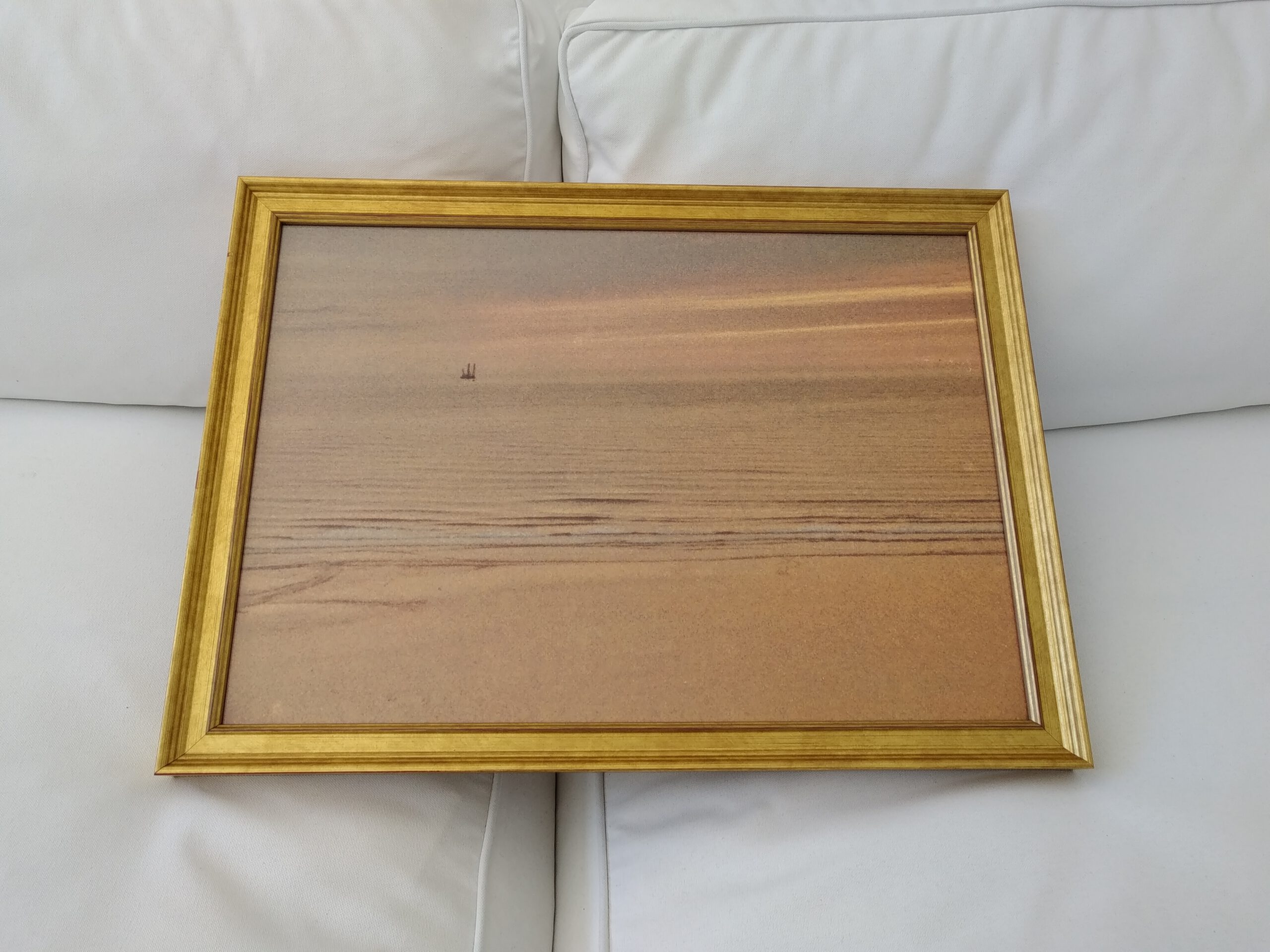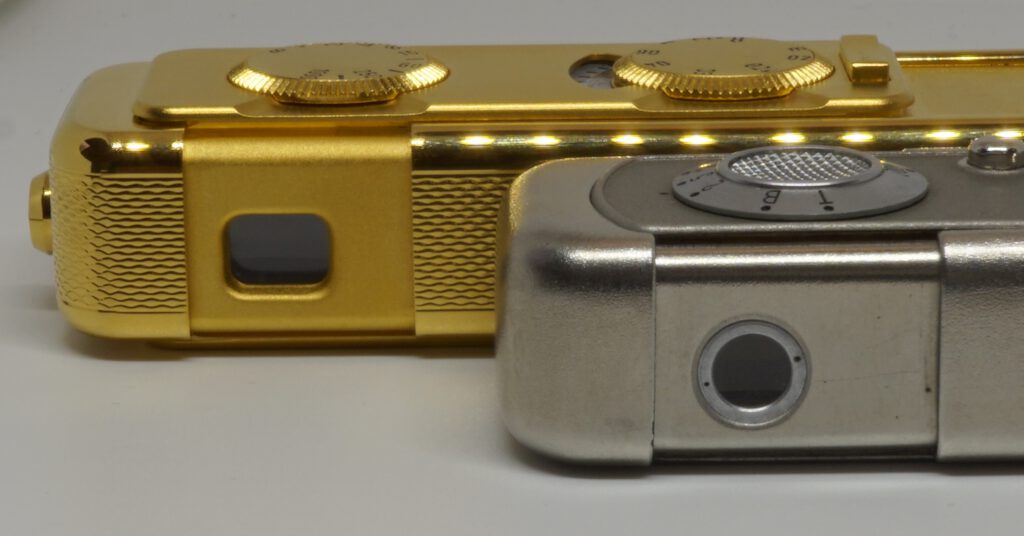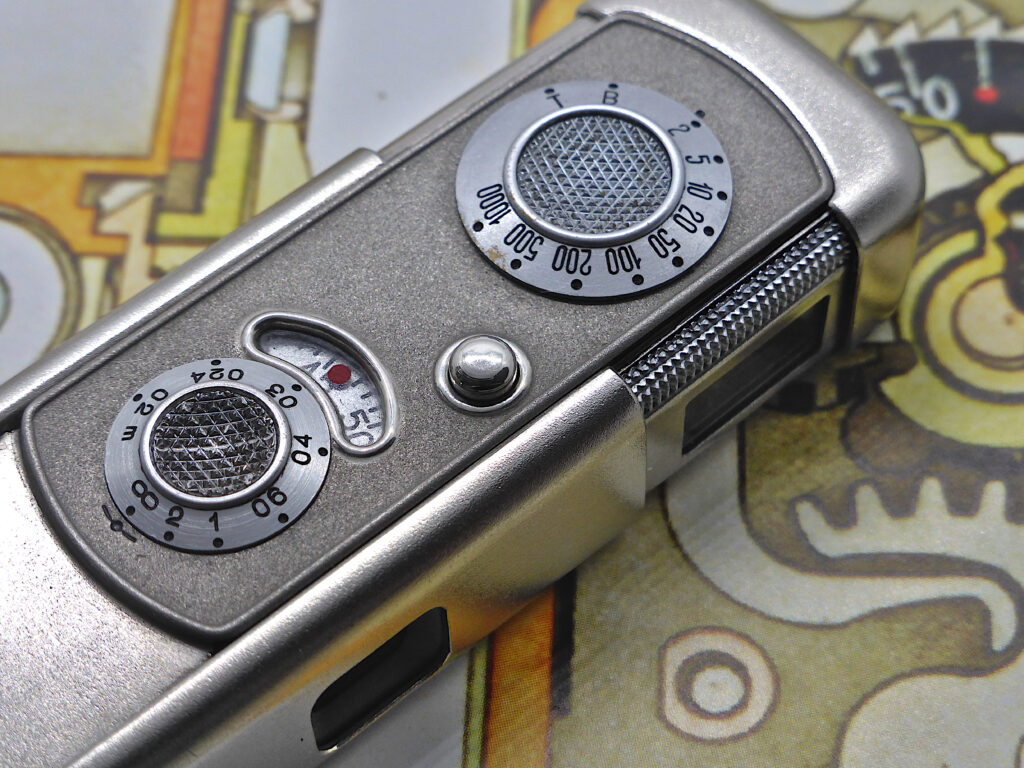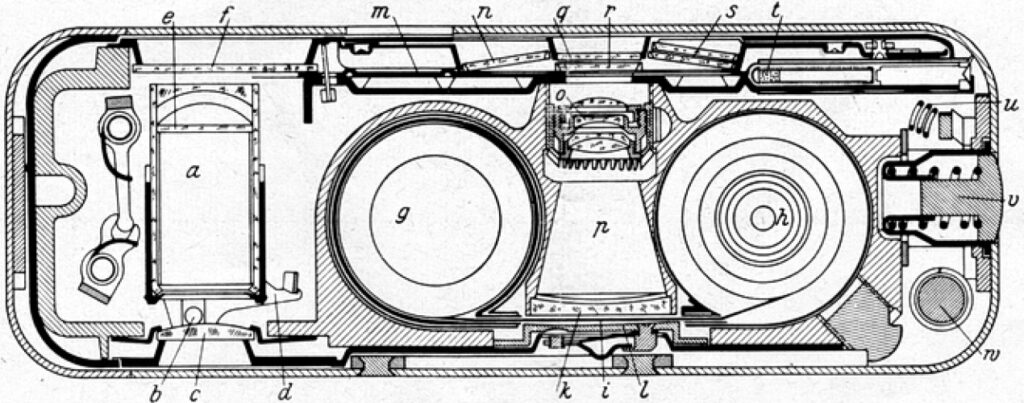Minox cameras in 8×11 mm format were produced for 63 years, from 1938 to 2001. There are eight different models, not including variants. What were the reasons for introducing each new model?
The answers to this question are interesting for collectors who want to understand how their Minox collection came about. The topic is also important for active Minox enthusiasts who are looking for the ideal camera for their Minox projects. And those interested in technology will certainly want to know which design decisions were made at the time and why.
Page Contents
Model 1: Riga Minox
The development goals for the Riga Minox, invented by Walter Zapp in 1936, can be summarized as follows:
- Miniaturization: The primary goal was to create an extremely compact camera that fits in the palm of the hand while still capable of taking high-quality photos. Walter Zapp aimed to design a camera smaller than a cigar and lighter than a lighter, making it easy to carry anywhere.
- High Image Quality: Despite its small size, the camera was intended to produce sharp images. This was achieved through the use of the high-quality Minostigmat lens (f/3.5, 15 mm), the ability to take close-ups and shutter speeds of up to 1/1000 s.
- Ease of Use: Zapp aimed to develop a camera that was easy to operate, even for people with little photographic knowledge. The operation was designed to be intuitive, such as simply opening and closing the camera to advance the film and cock the shutter.
- Portability: The camera was meant to be unobtrusive, enabling spontaneous photography. This later made the Minox particularly appealing as a spy camera, although this was not the original intent.
- Innovative Design: The camera was intended to be a technical masterpiece, distinguished by precision and high-quality materials (e.g., stainless steel housing). The design was robust and functional despite its compact size, incorporating advanced features like parallax-corrected viewfinder optics.
- Marketability as a Luxury Product: Originally, the Minox was conceived as a luxury item. It was meant to fill a niche in the market for compact cameras, which was then dominated by 35 mm cameras, through its innovative technology and elegant design.
The Riga Minox was the big hit, as there had never been a comparable camera before. It was already so well developed that there was hardly anything to improve.
Model 2: Minox A / II / IIIs
World War II had devastated the production facilities in Riga, destroying much of the infrastructure used to manufacture the original Minox camera. However, this destruction provided an opportunity for a fresh start, enabling the adoption of new manufacturing methods and modern machinery in the post-war era.
These advancements were particularly significant for the Minox A,  introduced in 1948, as they allowed for the production of an improved lens, which offered superior optical performance with enhanced sharpness and contrast.
introduced in 1948, as they allowed for the production of an improved lens, which offered superior optical performance with enhanced sharpness and contrast.
Additionally, the use of aluminum for the camera’s housing marked a leap forward, providing a lightweight yet durable body that elevated the Minox A’s portability.
Based on historical context, the goals were:
- Enhanced Ergonomics: The Minox A aimed to further refine the compact design of the Riga Minox, maintaining its size (slightly larger than the Riga but still highly portable). The aim was to make handling even easier, for example by introducing the measuring chain. It connected the camera securely to the photographer and, with its measuring beads, improved the quality of close-up shots.
- Improved Optical Performance: The Minox A featured an upgraded lens (COMPLAN f/3.5, 15 mm), designed to deliver sharper images with better contrast and resolution compared to the Riga’s Minostigmat lens, catering to both amateur and specialized users (e.g., document photography).
- Precisely tailored accessories: For the first time, accessories were available for the Minox A that greatly expanded its range of applications. The safety chain socket could hold either the measuring chain with leather case, the tripod, or even a binocular adapter, and connected these securely to the camera.
- Precision and Craftsmanship: The modern machine tools in West Germany after the war enabled a further increase in manufacturing quality, particularly for lenses and housings. Experience gained in Riga was incorporated into the new manufacturing processes. This made it possible, for example, to introduce a completely redesigned shutter.
Model 3: Minox B
### Development Goals for the Minox B Compared to the Minox A The development goals for the Minox B (1958–1972) compared to the Minox A focused on integrating a light meter and related technical enhancements, while preserving the core attributes of the Minox A. The following goals are specific to the Minox B, avoiding repetition of the objectives of the predecessor models, with a particular emphasis on the light meter and the reasons for accepting the increased housing size: 1. **Integration of a Coupled Light Meter**: – The Minox B aimed to be the first Minox camera equipped with a built-in, coupled selenium light meter (ASA 25–400, DIN 12–27) to simplify and enhance the precision of exposure settings, particularly for the newly emerging color films that demanded more accurate exposure than traditional black-and-white films. – **Why Necessary**: The Minox A lacked an integrated light meter, requiring users to rely on experience or external meters (e.g., the MinoSix from 1951), which was less convenient, especially for spontaneous photography. Color films, increasingly popular in the 1950s, had a narrower exposure latitude, making precise metering essential for accurate color reproduction and detail. The light meter made the camera more versatile and user-friendly for both amateurs and professionals handling color films. – **Why Feasible**: Advances in selenium cell technology enabled the creation of a compact, battery-free light meter that converted light into electrical signals. This technology was small and robust enough for integration into a subminiature camera, aligning with Minox’s battery-free design philosophy. 2. **Enhanced Usability Through Exposure Coupling**: – The Minox B sought to couple the light meter mechanically with the shutter, allowing users to set the shutter speed by aligning a triangular mark with the meter’s needle, streamlining the exposure process with a fixed aperture (f/3.5). – **Why Necessary**: This coupling minimized user errors, critical for color films where precise exposure was vital for correct color rendition. It made the camera more accessible to a broader audience, including those with limited photographic expertise, and offered a competitive advantage over other subminiature cameras with more complex exposure settings. – **Why Feasible**: The precision of Minox’s mechanical engineering allowed seamless integration of the light meter with the shutter control, maintaining a compact design. The match-needle system provided a simple, effective solution without requiring complex electronics. 3. **Acceptance of Housing Size Increase**: – The Minox B was designed to be approximately 15 mm longer (97 x 28 x 16 mm) than the Minox A to accommodate the light meter, while keeping width and height largely unchanged to preserve portability. – **Why Necessary**: The selenium cell and its associated mechanics (e.g., the “lattice” or “honeycomb” cell window) required additional space unavailable in the Minox A’s housing. This size increase was a necessary compromise to incorporate the technology needed for precise color film exposure. – **Why Accepted**: The slight size increase was deemed acceptable as the Minox B remained compact enough to fit in pockets or purses, retaining its discreet and portable nature. The added functionality of the light meter, especially for color film photography, justified the minimal size increase, enhancing market appeal. The production of 384,327 units underscores the success of this trade-off. **Note**: The information is based on technical and historical details of the Minox B’s development, drawn from sources such as Wikipedia, Crypto Museum, and Minox-related resources.



